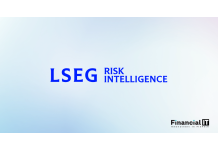AuditBoard's Scenario Planning Enables Banks to...
- 19.11.2025 07:55 am
Average Fake Claims Top £84,000 as Fraud Hits Insurer...
- 10.11.2025 10:35 am
Cytora and Fenris Partner to Embed Predictive...
- 06.11.2025 06:45 am
Cowbell Unveils Brand Refresh: The Sound Approach to...
- 04.11.2025 10:40 am
Prometeia Announces Partnership with Arab Bank...
- 14.10.2025 08:25 am
Prometeia and FinCredible Sign Strategic Partnership...
- 06.10.2025 01:05 pm
Real Time Data And Compliance Workflows Automation...
- 23.09.2025 03:50 pm
Cboe Europe Derivatives to Launch FLEX Options in...
- 16.09.2025 01:10 pm
Next Generation NGPES Integrates Chainalysis...
- 15.09.2025 09:35 am
CrediaBank Goes Live on Profile Software’s Risk &...
- 29.08.2025 04:05 pm
Socure Launches Global Expansion Of RiskOS™,...
- 01.08.2025 02:35 pm
Wolters Kluwer to Join Industry Leaders at Risk Live...
- 17.06.2025 09:05 am






















